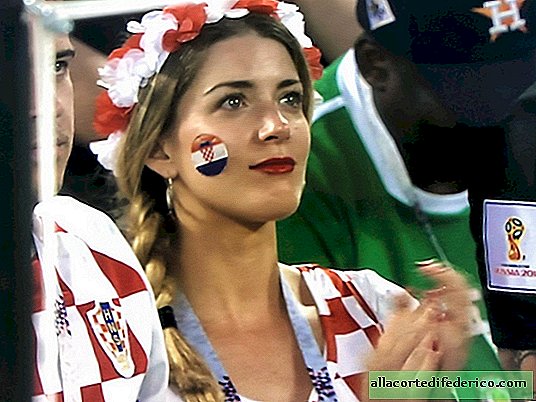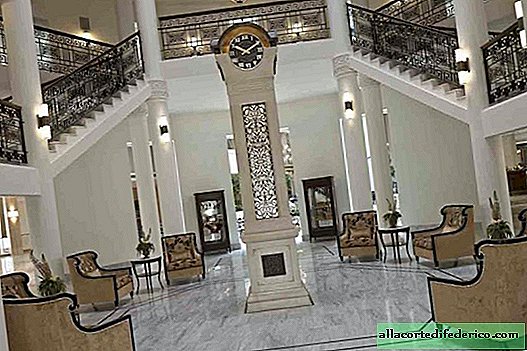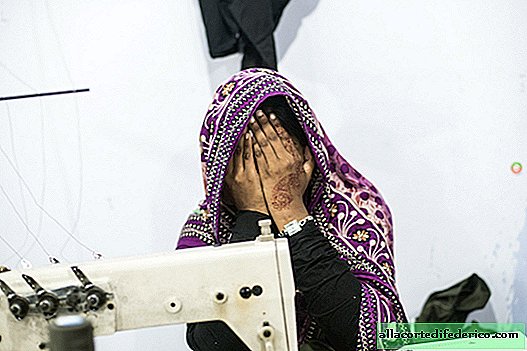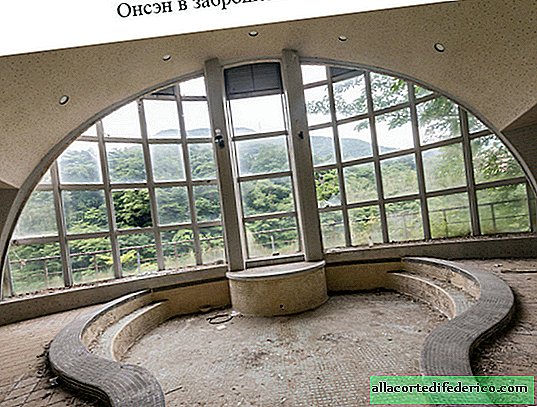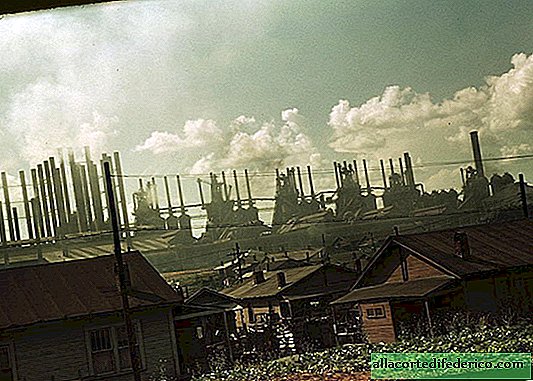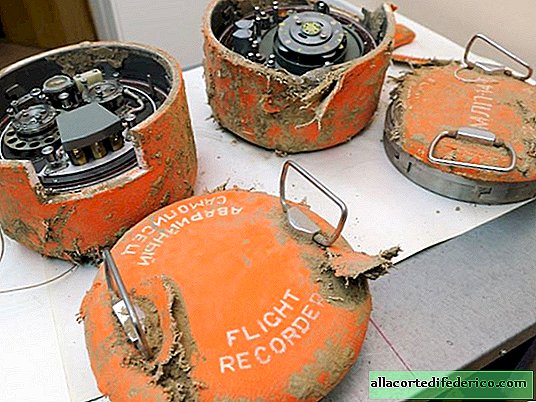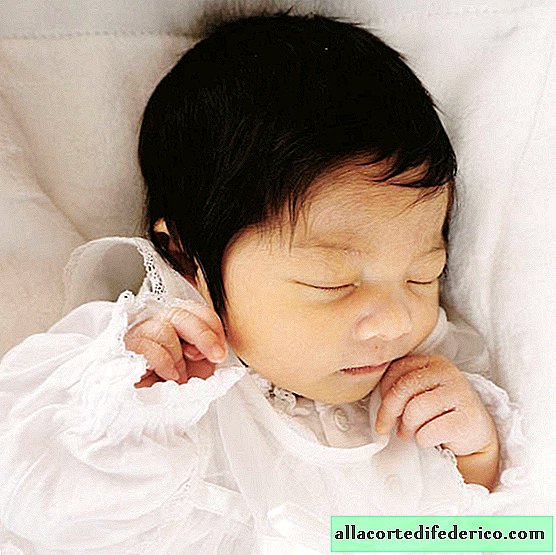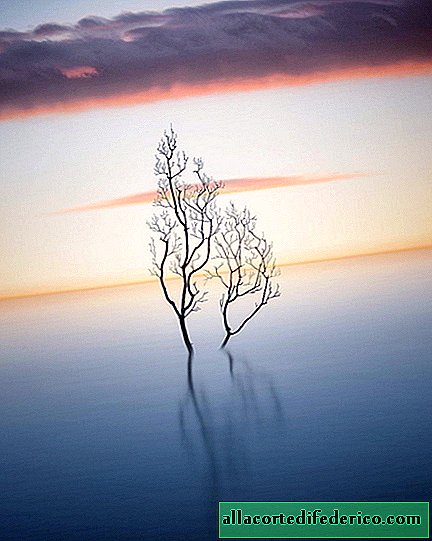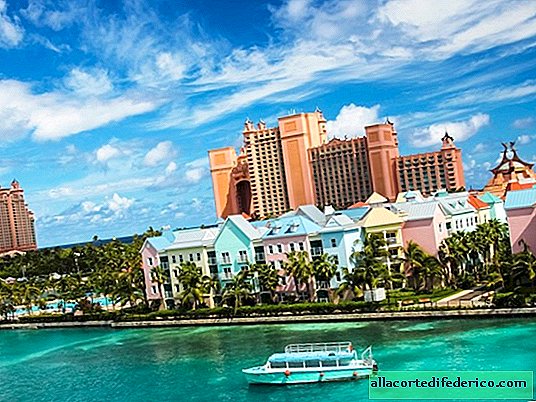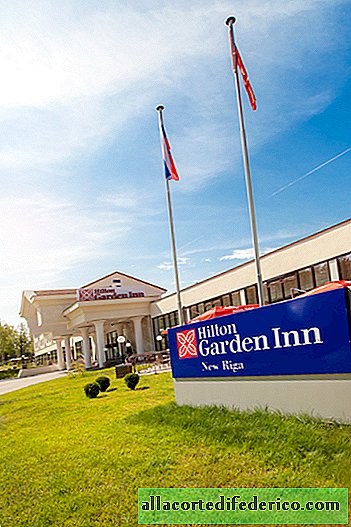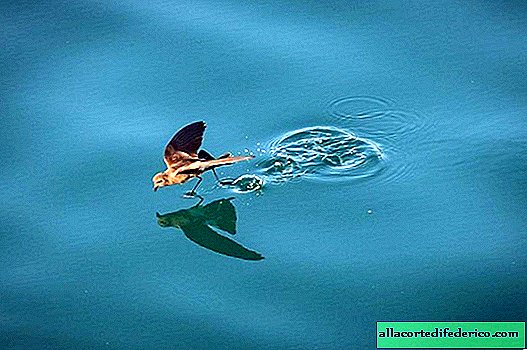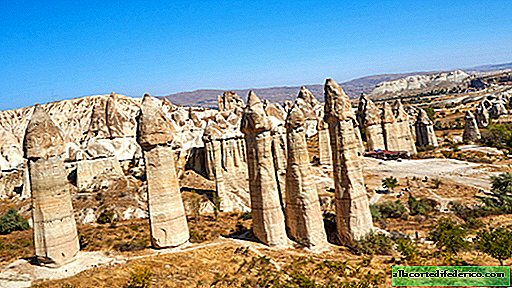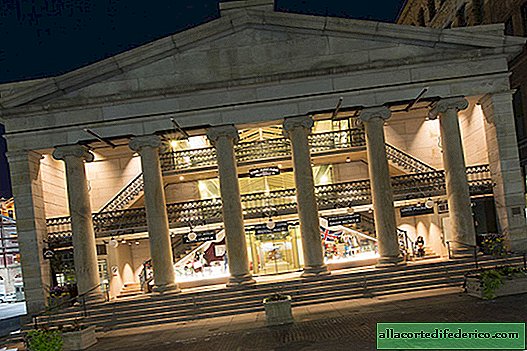Mount Athos - holy place of Greece
Mount Athos is located on the Athos Peninsula, this place is one of the most basic shrines for Orthodox Christians. It is believed that the Mother of God who gave birth to Jesus lived here. Therefore, these places are called the Portion of the Virgin. UNESCO included Mount Athos and the peninsula on the World Heritage List.
It is noteworthy that women and female animals should not be stepped on Mount Athos. The name of the peninsula and mountains came from the name of the Thracian mythical giant Athos. Translated, it means cliff. There is another name - Athos and Holy Mountain.
Coordinates and a brief description of the mountain
Mount Athos is located in Greece, here on the Athos Peninsula is the largest Orthodox monasticism. The peninsula is washed by the waters of the Aegean. There are 20 monasteries built and only the Julian calendar applies. The entire territory of the peninsula is independent of Greece, self-government is proclaimed here. Athos is a separate monastic state, which is subordinate to the authorities of the church of the Patriarchate of Constantinople.
Mount Athos coordinates:
- 40 ° 09'26 "north latitude;
- 24 ° 19'35 "East.
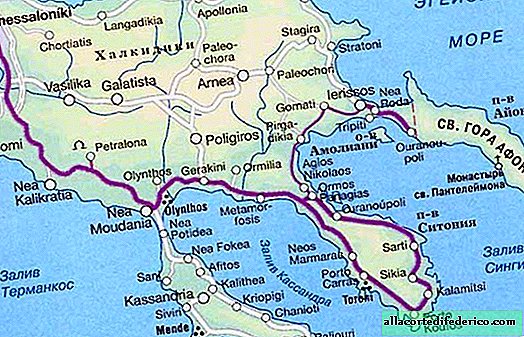 Mount Athos and the Athos Peninsula on the map
Mount Athos and the Athos Peninsula on the mapThe entire peninsula is the extreme tip of the eastern part of the Halkidiki peninsula. From the northwest side Athos stretches southeast for 60 km. The width of the Athos Peninsula is 7-19 km, the total area is 335.637 km². Mount Athos reaches a height of 2,033 m.
In total, 2,416 people live on the island, but earlier, for example, in 1903, the population was much larger - 7,432 people. The administrative center of Athos is Karje. The city is located right in the center of the peninsula; it is connected by a road with the main local port.
Features of the relief and geography of the peninsula and Mount Athos
There are 20 capes on the peninsula, where there are rocky and steep shores, there are large bays, of which the main one is Daphne. Ships arrive at this port; there are police, postal and customs sections.
Climatic conditions and fauna of the Athos Peninsula
The climate here is of a Mediterranean type, in the summer it is hot, in the winter it is warm and it often rains. Snowfall is rare here, but if it falls, then they stay on the surface for a long time. The climate favorably affects the fauna. Everywhere, except for the peak in the south, forests and shrubs grow: spruce, oaks, chestnuts. The southern part is represented by desert and arid territories. Due to climatic conditions, residents grow citrus and fruit species of trees, walnuts on the slopes of Athos, there are grape fields, olive plantations. The water from the local streams is clean and potable.
 There are many endemic plants on the mountain and in the zones of its location
There are many endemic plants on the mountain and in the zones of its locationThe flora of these places is very rich and diverse, largely due to the lack of pasture. It is noteworthy that the monks of Athos do not eat meat. Scientists during the study found on Mount Athos lands 14 species of endemic plants that are no longer found anywhere on the planet. On Mount Athos grows more than 70 Balkan endemic and 40 Greek.
Deforestation and shrubs are not carried out here, but there is one big danger to the local fauna - it is fires. The most extensive fire on Mount Athos over the past 40 years occurred in 2012. The flame of fire destroyed about 5,000 hectares of forest.
Fauna of the Athos Peninsula and Mount Athos Peaks
Of the representatives of the fauna, wild roe deer and wild boars, lynxes live in these places. Pilgrims confirm that they saw wolves here. The world of birds is represented by bright hummingbirds, pheasants, eagle owls, peregrine falcons, and pelicans live closer to the water. In addition to animals, scorpions and reptiles live on the peninsula and the peak of Athos, some of which are very dangerous for humans. Local monks abide by the strict law prohibiting the killing of living beings, therefore, even after meeting a poisonous snake, no one touches it.
Attractions Athos
The peninsula is the location of a large number of interesting sights, especially religious ones. There are many ancient and beautiful monasteries.
Dohiar is a male Orthodox monastery located in the southwestern part of Mount Athos, off the coast of the Aegean Sea. The monastery was founded in the 10th century, the founder was Euthymius Athos. In the 16th century, the Turks defeated him, but the monastery was again rebuilt. In the hierarchy of monasteries of Athos, he stands in 10th place. Dohiar is surrounded by groves and gardens, there are stunning and beautiful landscapes.
In the monastery there is a miraculous icon of the Mother of God "The Naughty". She is standing in the morning chapel. An icon was painted in the 10th century, during the time of the Mother Superior of Neophytos. According to the legend of 1664, a cell of the monastery named Neil casually treated his face, as a result of which he was struck by blindness. He repented and was healed. After this incident, many believers came here who needed physical and mental healing. In addition to the icon, the relics and relics of the saints, part of the Holy Cross of the Lord are stored in the premises of the monastery.
Dohiar is the highest of all such monasteries on Mount Athos, the cladding of the building is made of marble. Between the rooms from the temple to the refectory there are icons that depict the first three priors. In the territory of the monastery in 1299 a well appeared, which was called sacred. He appeared on his own and is a real miracle.
Not far from Dohiar in the west of the peninsula is the monastery of Xenophon. It was founded in the 10th century by nobles from Greece named Xenophon. 30 monks live and serve here.
 Dohiar holds many shrines
Dohiar holds many shrinesThe monastery was ravaged by pirates in 1285, but two Vlachian boyars resumed it in 1545. There is a Cathedral Church dedicated to St. George the Victorious, where important mosaic icons painted in the 11th century are stored:
- Icon of the Great Martyr George the Victorious;
- Icon of the Great Martyr Dmitry Solunsky.
Another valuable icon of the temple is the miraculous image of the Mother of God "Hodegetria". For a long time the icon was in the Vatoped monastery, but suddenly, in 1730, it disappeared. At the same time, the doors of the temple were well locked, and no one entered. She was nowhere on the territory of Vatopedi. Soon the monks from the brethren reported that they had seen the image in Xenophon, which was reached on foot for about 4 hours. The icon was moved back, but she again miraculously ended up in Xenophon. After that, the servants of the monastery Vatopedi no longer opposed the will of the Mother of God and did not transfer the face back.
An unusual story is also associated with the icon of St. George the Victorious. She ended up in Xenophon inexplicably, although before that she was in Constantinople. There is blood and a scar on the face - this is a trace from the blow of a Turkish fanatic.
The uniqueness of the monastery is also the presence of two Catholics. This is not the case in the other monasteries of the Athos Peninsula. The oldest building in the monastery is considered to be the side chapel of Dimitry of Solunsky. It is located on the right side of the altar of one of the Catholics. Xenophon has a large library with 4,000 printed books and 300 manuscripts.
Panteleimon Monastery stands off the coast of the Aegean Sea. Other names of the cloister:
- New Russik.
- Rossicon.
It is one of the ruling monasteries of Athos. According to tradition, Rossicon is considered a Russian monastery, but it became truly Russian only at the end of the 21st century. In the same century, the monastery passed under the control of Russia and the Russian Orthodox Church. The first leader of Russia to visit the monastery was Vladimir Putin. He arrived here in 2005.
 Panteleimon Monastery is considered a Russian monastery
Panteleimon Monastery is considered a Russian monasteryAfter a decline in the 18th century, in the 20th century it became the largest monastery on Athos, not only in area, but also in the number of monks in the brethren. There were 1,446 monks here in 1903. There were many fires in the history of Rossicon, the most famous of them occurred in 1307 and in 1968.
The monastery is remembered in history by a large number of feats accomplished by local Russian monks. The most famous of these was an old man named Siluan. The bells of the monastery in the 19th century were recognized as the largest in all of Greece.
The library of New Russik and several shrines are real treasures of the monastery. The library stores 20,000 manuscripts and books. During a fire in 1959, she was hit hard. Among the shrines are:
- relics of St. Panteleimon;
- relics of John the Baptist;
- icon of the Mother of God "Jerusalem";
- ancient image of st. Panteleimon.
The monastery of Vatoped is located in the north-eastern part of the Athos Peninsula. On one side of it is the abode of Pantocrator, on the other - Esfigmen. The foundation of the monastery falls on the period 972-985. This is a Greek male Orthodox monastery. In the hierarchy of Athos is the second. Vatoped is one of the oldest, largest and richest monasteries of the island.
The monastery was built by three wealthy and noble people: Anthony, Athanasius and Nikolai. They all became monks and studied under the most reverend Athanasius of Athos. He sent all three to live in the place where Vatoped is standing.
 Vatoped - one of the oldest monasteries of Athos
Vatoped - one of the oldest monasteries of AthosThe main cathedral of the monastery was built in the 10th century, in addition to it there are 16 churches on the territory. The monastery has many shrines, miraculous icons of the Mother of God are located here:
- Erupting.
- Slaughtered.
- Joy.
- Auditorium.
- The forerunner.
- Pyrovlifissa.
One of the priceless local shrines is the Belt of the Blessed Virgin Mary. This relic belonged, according to legend, to the Theotokos. A belt is kept in the chapel of the Holy Belt.
The "Slaughtered" icon has been kept in Vatoped since the 14th century and is located in the aisle of St. Dmitry. The name was given to the image after a story that happened in the monastery church. The deacon was late for a meal and after he refused and refused to eat, he went back to church in anger. There he stood in front of the icon and said that he was working, and he did not even have a piece of bread to support his strength. After that, he picked up a knife with which he scraped the wax and struck the face of the image. Immediately, blood flowed from the icon, and the deacon lost his sight. He fasted and repented for 3 years, asking the Mother of God for healing. The deacon was healed and later died. After the burial, the right hand with which he committed the act did not decompose. It is kept in the monastery cathedral.
 Holy Lavra - the main monastery of Athos
Holy Lavra - the main monastery of AthosThe Pyrovlifissa icon is located above the gate at the entrance to the monastery. Its name translates as "Shot through." A soldier from Turkey in 1822 fired and fell into the right hand of the Virgin on the image. Immediately after the deed, he lost his mind and hanged himself on an olive tree.
Vatoped’s library houses one of the rarest and richest collections of books. In total there are more than 10,000 printed publications, 2,068 manuscripts. The historical value of the monastery library is the Geographical Guide with Maps, which was written by Ptolemy.
In the monastery there is a fraternal tomb, where the bones of the dead monks are stored for 1,000 years. This is the Athos custom, according to which a dead monk is buried, after 3 years his remains are excavated and stored in a common tomb. The color of the bones speaks of the afterlife. If the bones are yellowish, it is believed that the deceased pleased the Lord especially. If the remains are not completely decomposed, they are again buried, the brothers pray for the deceased.
The Great Lavra is the main monastery monastery on all Athos. It is located on a plateau of a small area, in the southeastern part of the peninsula. A 30-minute walk from the Great Lavra is the sea coast. Athanasius of Athos founded a monastery in 963. In the Lavra there is a Cathedral Church, where frescoes of the 16th century are stored. The frescoes were painted by the Orthodox icon painter Feofan of Crete. There are many shrines in the monastery, among which:
- the rod and cross of St. Athanasius;
- the miraculous icon of Kukuzelissa;
- the miraculous icon of "Economics";
- relics of St. Basil the Great;
- Elements of the life-giving tree of the Cross of the Lord.

